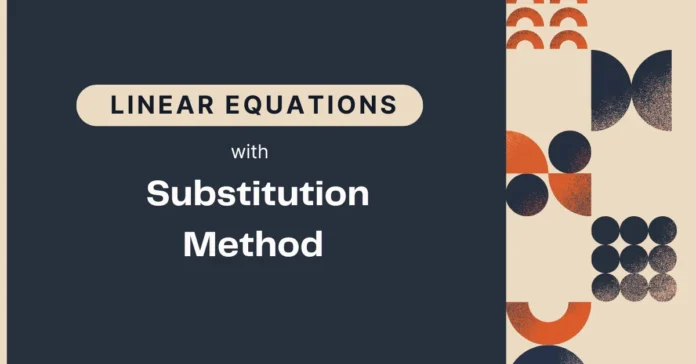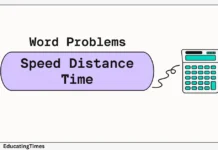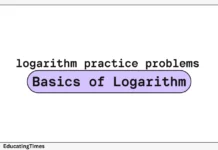Substitution is a technique that we use to simplify algebraic expressions or equations by replacing a variable with an expression or value that has the same numerical value.
We can use this technique to solve equations or simplify expressions to make them easier to work with.
Easy examples of substitution:
Example 1:
Solve the equation 3x + 4y = 10 for y when x = 2.
To solve this equation, we can use substitution by replacing x with 2:
3(2) + 4y = 10
6 + 4y = 10
Now we can isolate y by subtracting 6 from both sides:
4y = 4
y = 1
So when x = 2, y = 1.
Example 2:
Simplify the expression 2x + 3y – 5x – 2y.
To simplify this expression, we can use substitution by combining like terms:
(2x – 5x) + (3y – 2y) = -3x + y
So the simplified expression is -3x + y.
Example 3:
Solve the equation 4x – 7 = 5x – 2 for x.
To solve this equation, we can use substitution by rearranging the equation to isolate one of the variables:
4x – 7 = 5x – 2
-7 + 2 = 5x – 4x
-5 = x
So x = -5.
Example 4:
Simplify the expression 2(x + 3) – 3(2x – 1).
To simplify this expression, we can use substitution by distributing the coefficients:
2x + 6 – 6x + 3
Simplifying this expression gives:
-4x + 9
So the simplified expression is -4x + 9.
Also Practice – Exponents Surds and Indices
Questions Related to Substitution to Solve Equations:
Question 1:
Solve the system of equations:
3x + 4y = 10
2x – y = 5
Step 1: Solve the second equation for y:
y = 2x – 5
Step 2: Substitute y = 2x – 5 into the first equation:
3x + 4(2x – 5) = 10
Step 3: Simplify and solve for x:
11x – 20 = 10
11x = 30
x = 30/11
Step 4: Substitute x = 30/11 into either equation to solve for y:
2(30/11) – y = 5
y = -4/11
The solution is (x, y) = (30/11, -4/11).
Question 2:
Solve the equation:
2x + 3y = 7
y = x – 1
Step 1: Substitute y = x – 1 into the first equation:
2x + 3(x – 1) = 7
Step 2: Simplify and solve for x:
5x – 3 = 7
5x = 10
x = 2
Step 3: Substitute x = 2 into either equation to solve for y:
y = 2 – 1
y = 1
the solution is (x, y) = (2, 1).
Question 3:
Solve the equation:
3x + 5y = 1
2x – 3y = 4
Step 1: Solve the second equation for x:
x = (3y + 4)/2
Step 2: Substitute x = (3y + 4)/2 into the first equation:
3((3y + 4)/2) + 5y = 1
Step 3: Simplify and solve for y:
9y + 12 + 10y = 2
19y = -10
y = -10/19
Step 4: Substitute y = -10/19 into either equation to solve for x:
x = (3(-10/19) + 4)/2
x = 2/19
The solution is (x, y) = (2/19, -10/19).
Question 4:
Find the slope-intercept form of the equation of the line passing through the points (-3, 5) and (2, -1)
Step 1:
Calculate the slope using the formula
m = (y2 – y1) / (x2 – x1):
m = (-1 – 5) / (2 – (-3)) = -1
Step 2:
Use the point-slope form of the equation of a line,
y – y1 = m(x – x1), and choose one of the points to substitute the values:
y – 5 = -1(x – (-3))
y – 5 = -x – 3
Step 3:
Solve for y by isolating it:
y = -x + 2
The solution is y = -x + 2,
which is the slope-intercept form of the equation of the line.
Question 5:
Solve the system of equations:
3x – 2y = 7
5x + 4y = 14
Solution
Step 1:
Multiply the first equation by 2 and add it to the second equation to eliminate y:
6x – 4y + 5x + 4y = 14 + 2(7)
11x = 28
x = 28/11
Step 2:
Substitute x = 28/11 into either equation to solve for y:
3(28/11) – 2y = 7
84/11 – 2y = 7
-2y = -35/11
y = 35/22
The solution is (x, y) = (28/11, 35/22).
Also Practice – Square Roots and Cube Roots
Medium-level questions that demonstrate how substitution can be used to solve equations or simplify expressions:
Question 1:
Solve the equation (2x + 1)(3x – 5) = 0 using substitution.
We can use the zero-product property to solve the equation, which states that if the product of two factors is zero, then at least one of the factors must be zero.
So we set each factor equal to zero and solve for x:
2x + 1 = 0 => 2x = -1 => x = -1/2
3x – 5 = 0 => 3x = 5 => x = 5/3
So the solution to the equation is x = -1/2 or x = 5/3.
Question 2:
Simplify the expression (2x – 3y)(x + y) – (x – y)(3x + 2y) using substitution.
We can simplify the expression by distributing the factors and combining like terms:
(2x – 3y)(x + y) – (x – y)(3x + 2y) = 2x^2 – xy – 3y^2 – 3x^2 – 5xy + 2y^2
We can further simplify by collecting like terms: -x^2 – 3xy – y^2
So the simplified expression is -x^2 – 3xy – y^2.











